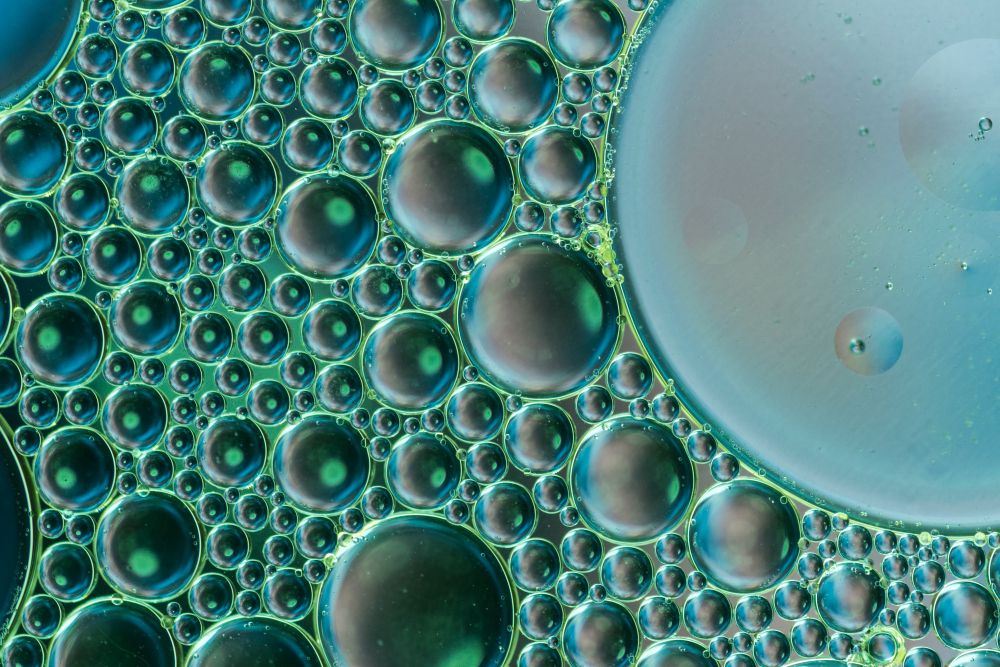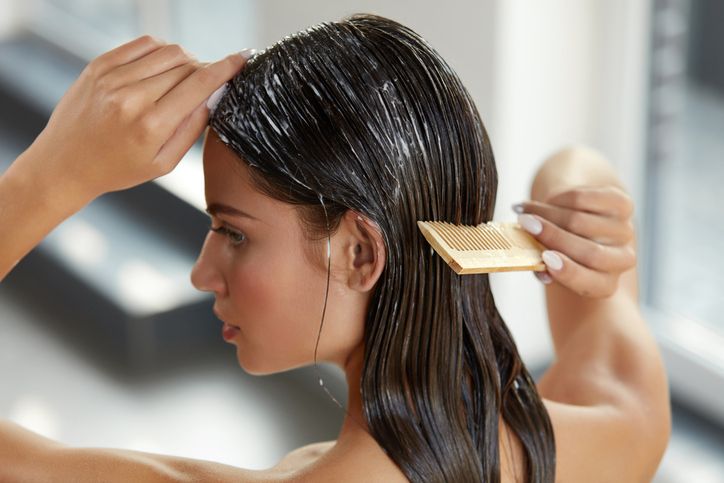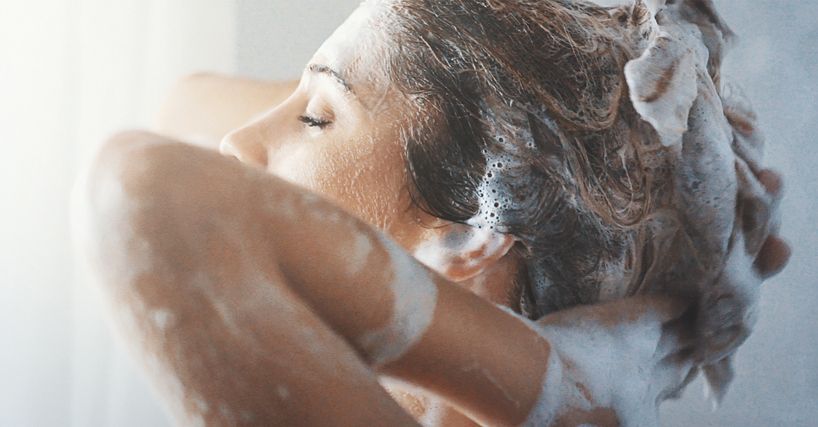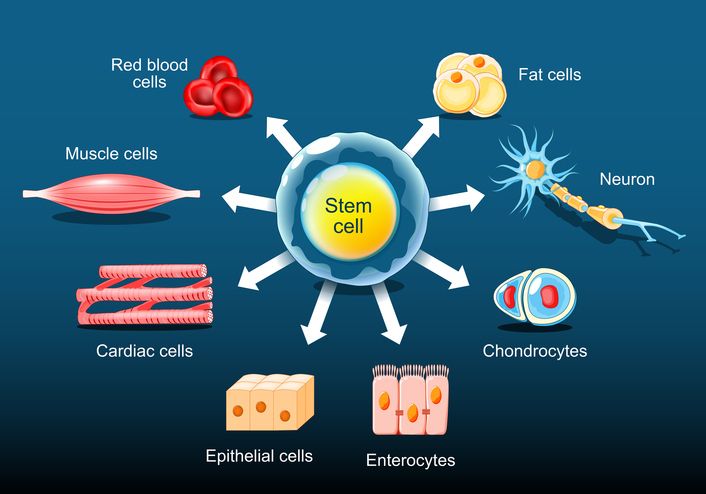
Author: Natalie Ng|Updated: 18 June 2025
If your scalp feels oily, itchy, or your hair looks flat even after washing, scalp buildup may be the cause. Scalp Buildup can come from dry shampoo, conditioner near the roots, or even the minerals in your tap water. Hot showers and some hair products make it worse. Stress can also cause your scalp to produce more oil than usual. Buildup can block your hair follicles and trap dead skin cells, leading to flakes, greasy hair, or even hair loss over time. Wondering what else could be behind it? Here are 7 causes of scalp buildup that you may not realize.

Hard Water and Mineral Deposits

Mineral deposits from hard water can feel like scalp buildup
Hard water doesn’t directly cause scalp buildup, but the minerals in it—mainly calcium and magnesium—can leave behind a chalky film on your hair and scalp. This residue makes hair feel rough, look dull, and harder to rinse clean. It often gets mistaken for buildup because it weighs down the hair and leaves the scalp feeling coated.
Even when you wash your hair regularly, these minerals can mix with:
• dead skin cells
• sweat
• excess oil
• leftover hair products
This combination can clog hair follicles, trap sebum buildup, and lead to oily scalp or a flaky scalp. It also affects how well hair cosmetics work and may contribute to scalp irritation or hair loss over time.
Solutions that reduce mineral residue and loosen buildup
• Use a clarifying shampoo once a week to remove dead skin cells, product residue, and mineral buildup
• Install a shower filter to reduce mineral deposits from daily hair washing
• Rinse with diluted apple cider vinegar (1 part vinegar to 3 parts water) to dissolve buildup and clean the scalp gently

Over-Conditioning Your Hair

Excess conditioner can lead to buildup on the scalp
Using conditioner helps smooth hair and reduce damage, but applying too much—or applying it too close to the roots—can lead to scalp buildup. When conditioner sits near the scalp, it creates a sticky layer that traps dirt, oil, and leftover hair products. Over time, this can clog hair follicles and cause your scalp to feel greasy, heavy, or itchy.
The issue becomes more noticeable on fine hair, where buildup shows up faster and weighs strands down. If left unchecked, this can affect how well your hair grows and how clean your scalp feels after washing.
Steps that help prevent product buildup from conditioner
• Use a quarter-sized amount and apply it from the mid-lengths to ends of your hair
• Avoid placing conditioner directly on the scalp—keep at least two inches of space from the roots
• For fine hair, try conditioning before shampooing
• Rinse your hair thoroughly for at least 30 seconds to remove any slick residue
This approach helps reduce excess oil production and supports better scalp care without stripping away natural oils.
Book Now to Experience
F8 Hair Regrowth Treatment
1 Minute Self-Registration
Date should not be before minimal date

Not Rinsing Shampoo Thoroughly
Shampoo residue can build up if not rinsed out fully
Leaving shampoo behind on the scalp is one of the easiest ways to cause buildup. It often happens when you rush through your shower or don’t rinse long enough. Even mild shampoos can leave behind a film if not fully washed away, especially around the roots and hairline. This leftover residue can trap dead skin cells and excess oil, leading to clogged hair follicles, dull hair, and irritation.
It’s not just about cleanliness—this kind of buildup can make your scalp feel itchy, increase sebum buildup, and reduce how well other scalp treatments or products work.
Simple rinse habits that reduce leftover buildup
• Rinse your scalp under warm water for at least 60 to 90 seconds
• Use your fingers to gently massage your scalp while rinsing, especially at the crown and hairline
• Part your hair in sections as you rinse to make sure water reaches all areas
• Look for that “squeaky” clean feeling—your hair should feel smooth but not slick
If you wash your hair at night, setting a timer can help prevent rushing for a cleaner scalp, and reduce the chance of buildup from shampoo residue.

Using Dry Shampoo Too Frequently
Powder buildup from dry shampoo can clog the scalp
Dry shampoo is a quick fix for oily hair, but using it too often can lead to scalp buildup. Most dry shampoos are powder-based and work by soaking up excess oil. When used more than once or twice a week, the powder doesn’t fully absorb or brush out, especially if it mixes with sebum and sweat. Over time, this leaves behind a layer of residue that clogs hair follicles and causes scalp irritation.
This kind of buildup can lead to a flaky scalp, greasy hair that feels coated, and may even slow down hair growth if the buildup becomes too dense. It also dulls the hair’s appearance and can make your scalp feel tight or uncomfortable.
Better habits that reduce dry shampoo buildup
• Limit dry shampoo use to once or twice per week
• Apply it before bed to give the powder time to absorb oil overnight
• Use a bristle brush in the morning to remove any remaining product
• Wash your hair regularly to prevent buildup from becoming a stubborn layer
Dry shampoo should be used as a backup, not a replacement for hair cleansing. Keeping your scalp clear helps maintain healthy oil balance and supports better hair and scalp condition over time.
Book Now to Experience
F8 Hair Regrowth Treatment
1 Minute Self-Registration
Date should not be before minimal date

Hormonal Changes and Stress
Shifts in hormones and stress levels can increase scalp oil
Hormonal changes and chronic stress can trigger the scalp to produce more sebum than usual. This extra oil mixes with dead skin cells and product residue, leading to visible scalp buildup. During periods like pregnancy, menopause, or thyroid imbalances, oil glands near the hair follicles may become more active, making the scalp feel waxy, oily, or harder to clean.
Stress is another factor too. When stress levels rise, your body releases cortisol, which affects how much oil your scalp makes. This can lead to greasy hair, clogged pores, and even contact dermatitis or scalp irritation if buildup becomes too thick.
Ways to manage oil production and reduce buildup
• Use a clarifying shampoo weekly to help manage excess oil and remove buildup
• Massage your scalp gently for 2 to 3 minutes during washing to loosen buildup
• Allow enough time for rinsing to prevent further irritation from leftover residue

Wrong Water Temperature During Washing
Water that's too hot or too cold affects scalp cleansing
Water temperature can impact how well you clean your scalp and remove buildup. Hot water may feel relaxing, but it can strip away too much of your scalp’s natural oils. This can trigger excess oil production as your scalp tries to rebalance itself, which adds to the buildup. On the other hand, water that’s too cold can tighten the skin and pores, making it harder to rinse away dead skin cells, natural oils, and leftover hair products.
This temperature imbalance can lead to a scalp that feels dry in some areas but greasy in others. Over time, it may also interfere with your hair products' ability to rinse clean, especially if you’re using styling products or dry shampoo regularly.
Ideal water temperatures that support scalp care
• Start with warm water (about 100–105°F or 38–40°C) to help open the cuticles and cleanse properly
• Keep your wash time between 5 to 7 minutes to avoid excess oil removal
• Finish with a cool rinse (around 65–75°F) to help close the cuticles and tighten the scalp surface
• Make sure the water is comfortable to the touch—not too hot or too cold
Book Now to Experience
F8 Hair Regrowth Treatment
1 Minute Self-Registration
Date should not be before minimal date

Silicone-Heavy Hair Products
Non-water-soluble silicones can create long-lasting buildup
Many styling products and conditioners contain silicones like dimethicone or cyclopentasiloxane. These ingredients are used to smooth hair strands and add shine, but they’re not water-soluble. Over time, they coat both the hair and scalp, forming a layer that doesn’t wash away easily with regular shampoo. This buildup can trap excess oil, sweat, and dead skin cells, making the scalp feel heavy or itchy.
You’ll often notice this type of buildup when your hair starts to look dull, feels coated, or your scalp becomes harder to clean. If ignored, it can lead to clogged pores, scalp irritation, and even interfere with natural oil flow or healthy hair growth.
Changes that help reduce silicone buildup on the scalp
• Check product labels for non-water-soluble silicones and limit use to once or twice weekly
• Switch to silicone-free or water-soluble silicone formulas when possible
• Use a clarifying shampoo every two weeks to get rid of scalp buildup caused by silicone layers
• Avoid overlapping heavy conditioners and styling products on the same day

How to Get Rid of Scalp Buildup Effectively
Simple steps that help clean your scalp without irritation
Getting rid of scalp buildup doesn't require a complicated routine—it just needs the right steps done regularly. The goal is to remove dead skin cells, excess oil, and product residue while keeping your scalp healthy and balanced.
• Wash your hair regularly using a gentle shampoo suited to your hair type. This helps keep excess sebum and styling products from sitting on the scalp too long.
• Use a clarifying shampoo once a week if you use a lot of hair cosmetics, dry shampoo, or live in an area with hard water. It helps break down layers of buildup without over-drying the scalp.
• Rinse thoroughly after shampooing and conditioning. Spend extra time under warm water to make sure no residue is left behind.
• Try an apple cider vinegar rinse once a week. Mix one part vinegar with three parts water and pour it over your scalp after shampooing. Let it sit for a few minutes before rinsing. This helps loosen buildup and balance the scalp’s pH.
• Use a scalp massager or soft bristle brush during shampooing. It helps lift buildup and boosts circulation to the hair follicles.
Book Now to Experience
F8 Hair Regrowth Treatment
1 Minute Self-Registration
Date should not be before minimal date

Scalp Care Routine for Different Hair Types
Scalp needs change based on hair type and oil balance
Not all scalps respond the same to buildup. Factors like oil production, texture, and how often you wash your hair all affect how buildup forms and how to manage it. A proper hair care routine can help reduce scalp buildup causes while keeping your hair healthy and balanced.
Oily Hair
• Wash your hair every 1–2 days to prevent excess oil from collecting on the scalp
• Use a lightweight, sulfate-free shampoo that controls sebum buildup without stripping
• Avoid applying conditioner near the roots—focus on mid-length to ends only
• Use dry shampoo no more than once or twice a week to avoid clogging hair follicles
• Clarify weekly to remove excess oil and product buildup
Dry or Damaged Hair
• Wash your hair 2–3 times per week to allow natural oils to hydrate the scalp
• Use a moisturizing shampoo and a silicone-free conditioner
• Apply a scalp treatment once a week to soothe irritation and add moisture
• Avoid harsh chemicals or alcohol-based styling products
• Gently massage your scalp during each wash to remove dead skin cells without further irritation
Fine Hair
• Wash your hair regularly, every 2–3 days, to prevent heavy buildup from weighing it down
• Choose a lightweight shampoo and rinse thoroughly to avoid residue
• Use a clarifying shampoo every 2 weeks to keep the scalp clear
• Avoid heavy hair gels, waxes, and silicone-heavy products that can coat both hair strands and scalp
Thick or Coarse Hair
• Wash every 3–4 days, depending on oil levels and product use
• Use a rich, hydrating shampoo and conditioner combo
• Exfoliate your scalp weekly using a scalp scrub or bristle brush to remove buildup on the scalp
• Apply warm oil treatments before washing to help loosen buildup and soften skin cells

Professional Scalp Treatments That Support a Cleaner, Healthier Scalp
F8 Hair Regrowth Treatment can help manage scalp buildup causes and promote healthy hair growth
For those dealing with stubborn scalp buildup—especially when it leads to clogged follicles, oily scalp, or slowed hair growth—routine care might not be enough. In these cases, a non-invasive in-clinic solution like the F8 Hair Regrowth Treatment can support your regular hair care efforts and improve scalp health at a deeper level.
This treatment combines low-energy laser therapy with a powerful hair growth serum to address multiple scalp concerns. It helps activate sluggish hair follicles, boost microcirculation, and cleanse the scalp surface where natural buildup tends to collect. By improving blood flow and clearing pore blockages, the F8 treatment helps remove dead skin cells, reduce excess oil production, and create the ideal environment for healthy hair growth.
How F8 Hair Regrowth Treatment works
• A professional hair expert first examines your scalp and hair follicles using magnification to assess buildup, blockage, and overall scalp condition
• The therapist applies low-level laser energy across the scalp to stimulate blood flow, activate hair follicles, and strengthen the hair papilla
• Next, a high-quality hair growth serum is applied to unclog pores, calm sebum secretion, and restore water-oil balance on the scalp
• The laser helps the serum absorb deeper, supporting scalp exfoliation and reducing the risk of future buildup
Advantages of F8 for buildup-related scalp issues
• Non-invasive and safe: No downtime, no skin damage, and suitable for both men and women
• Targets buildup at the source: Helps cleanse scalp pores and clear buildup from hair products, dead skin, and natural oils
• Improves circulation: Strengthens capillaries to deliver nutrients to the hair root, which is key to maintaining healthy hair
• Supports long-term scalp care: Works well alongside your regular hair cleansing and scalp exfoliation routine
F8 Hair Regrowth Treatment is ideal if you’re noticing signs of buildup on the scalp that don’t fully go away with home care—like an itchy scalp, dull hair, or blocked hair follicles. When used alongside a proper scalp care routine, it can enhance your results and support long-term hair health.
Book F8 today to improve your scalp condition and support healthy, lasting hair growth.
New Beauty's F8 Hair Regrowth Treatment
Common Mistakes That Lead to Scalp Buildup
Everyday habits that make buildup worse over time
Even with a regular hair care routine, small mistakes can lead to scalp buildup without you noticing. These habits may seem minor but can affect scalp health if they happen often.
• Washing your hair too often or not enough
Washing too frequently can dry out the scalp and lead to excess oil production. Washing too little allows sweat, dead skin cells, and product residue to collect. The best approach is to wash your hair regularly based on your hair type and oil level.
• Skipping scalp exfoliation
Many people exfoliate their face but ignore their scalp. Without regular exfoliation, dead skin cells, sebum, and styling products collect at the roots and clog hair follicles.
• Using too many styling products
Hair gels, sprays, and waxes can coat the scalp and are difficult to wash out. If left behind, they contribute to a stubborn layer of natural buildup that blocks healthy oil flow.
• Rinsing too quickly
Incomplete rinsing can leave shampoo and conditioner behind on the scalp. Always take extra time during rinsing, especially around the hairline and crown.
• Applying conditioner directly on the scalp
Conditioner is made for hair strands, not the scalp. Placing it near the roots can clog pores and lead to greasy hair or itchy scalp.
Avoiding these habits makes it easier to keep your scalp clean, reduce buildup, and keep things like irritation or slow hair growth from becoming a problem.
Book Now to Experience
F8 Hair Regrowth Treatment
1 Minute Self-Registration
Date should not be before minimal date
FAQ
Can scalp buildup cause hair thinning even if I don’t have dandruff?
Yes, scalp buildup can lead to hair thinning even without visible dandruff. When dead skin cells, sebum, and hair products build up on the scalp, they can clog hair follicles. This restricts oxygen and nutrient flow, which affects the hair growth cycle. Over time, this can weaken the hair strands and reduce hair density, especially around the crown and hairline.
What does scalp buildup look like?
Scalp buildup can show up in different ways depending on your hair and scalp condition. You might see a white or yellowish coating on the scalp, flakes that aren’t dry scalp-related, or feel a waxy or greasy texture when you touch your scalp. In some cases, buildup causes small bumps or crusty sores, especially if it's mixed with excess oil or sweat.
Can scalp buildup happen even if I wash my hair every day?
Yes, washing your hair regularly doesn’t always prevent buildup—especially if you’re using heavy conditioners, dry shampoo, or silicone-based hair products. Buildup can still form if you don’t rinse properly or exfoliate the scalp. In some cases, overwashing can even lead to increased oil production, which makes buildup worse.
Is scalp buildup common in people with fine hair?
Scalp buildup is very common in people with fine hair because their strands get weighed down more easily by excess oil or product residue. Fine hair also tends to lie flatter on the scalp, which can trap sweat and styling products closer to the roots. If not cleaned well, this leads to a greasy scalp, dull hair, and blocked follicles.
Can scalp buildup cause an unpleasant odor?
Yes, buildup from sweat, oil, and leftover hair products can trap bacteria on the scalp, which often leads to an unpleasant odor. This is more likely if you exercise frequently, live in a humid climate, or wear hats for long periods. Regular scalp cleansing and proper rinsing help reduce this problem and support a healthy scalp environment.
Recommended Articles
COPYRIGHT© NEW BEAUTY MANAGEMENT LIMITED 2025. ALL RIGHT RESERVED.




